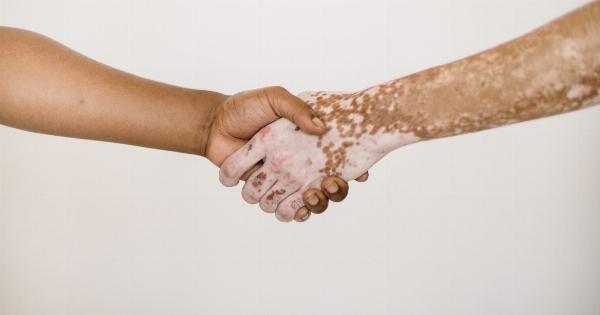Scleroderma is a chronic autoimmune disease that primarily affects the skin and connective tissues, but can also affect internal organs such as the lungs, heart, and kidneys.
The word “scleroderma” comes from the Greek words “sclero” meaning hard, and “derma” meaning skin.
Types of Scleroderma
There are two main types of scleroderma: localized scleroderma and systemic sclerosis.
Localized Scleroderma
Localized scleroderma is a milder form of the disease that typically only affects the skin. It is further classified into several subtypes, including:.
- Linear scleroderma: characterized by a linear band of thickened and hardened skin
- Morphea: characterized by oval or round patches of hardened skin
- Deep morphea: characterized by thickened skin that extends deep into the tissue
Systemic Sclerosis
Systemic sclerosis is a more severe form of scleroderma that can affect internal organs in addition to the skin. It is also further classified into two subtypes:.
- Limited cutaneous systemic sclerosis: characterized by thickened skin that is limited to the hands, feet, face, and lower arms and legs
- Diffuse cutaneous systemic sclerosis: characterized by thickened skin that covers large areas of the body, including the trunk and limbs
Symptoms of Scleroderma
Scleroderma symptoms can vary widely depending on the type and severity of the disease. The most common symptoms of scleroderma include:.
- Hardened and thickened skin
- Joint pain and stiffness
- Raynaud phenomenon: episodes of decreased blood flow to the fingers and toes that causes numbness, tingling, and color changes
- Shortness of breath and coughing
- Difficulty swallowing
- Heartburn and acid reflux
- High blood pressure
- Kidney problems
- Ulcers on the fingers and toes
Causes of Scleroderma
The exact cause of scleroderma is unknown, but researchers believe that a combination of genetic and environmental factors may play a role in its development.
The immune system is also thought to play a role, as it mistakenly attacks healthy tissues and organs in people with scleroderma.
Treatment for Scleroderma
There is currently no cure for scleroderma, but there are several treatments available that can help manage the symptoms of the disease. Treatment options include:.
- Immunosuppressant drugs: suppress the immune system to reduce inflammation and slow the progression of the disease
- Corticosteroids: reduce inflammation and help improve skin thickness and stiffness
- Medications for Raynaud phenomenon: improve blood flow and reduce episodes of numbness and tingling in the fingers and toes
- Blood pressure medications: help manage high blood pressure caused by kidney problems
- Therapies for heartburn and acid reflux: help manage symptoms and reduce damage to the esophagus
- Physical therapy: helps improve mobility and reduce joint pain and stiffness
Living with Scleroderma
Living with scleroderma can be challenging, but there are several things that people with the disease can do to manage their symptoms and improve their quality of life. These include:.
- Eating a healthy diet: a balanced diet that is rich in fruits, vegetables, and whole grains can help reduce inflammation and maintain a healthy weight
- Exercise regularly: regular exercise can help improve joint mobility and reduce stiffness and pain
- Avoid smoking: smoking can worsen symptoms of Raynaud phenomenon and increase the risk of lung problems
- Avoid cold temperatures: exposure to cold temperatures can trigger episodes of Raynaud phenomenon, so it is important to dress warmly and avoid prolonged exposure to cold temperatures
- Manage stress: stress can worsen symptoms of scleroderma, so it is important to find ways to manage stress and relax, such as meditation, yoga, or deep breathing exercises
Research on Scleroderma
Research on scleroderma is ongoing, and new treatments and therapies are being developed to help manage the disease. Some of the current areas of research include:.




























